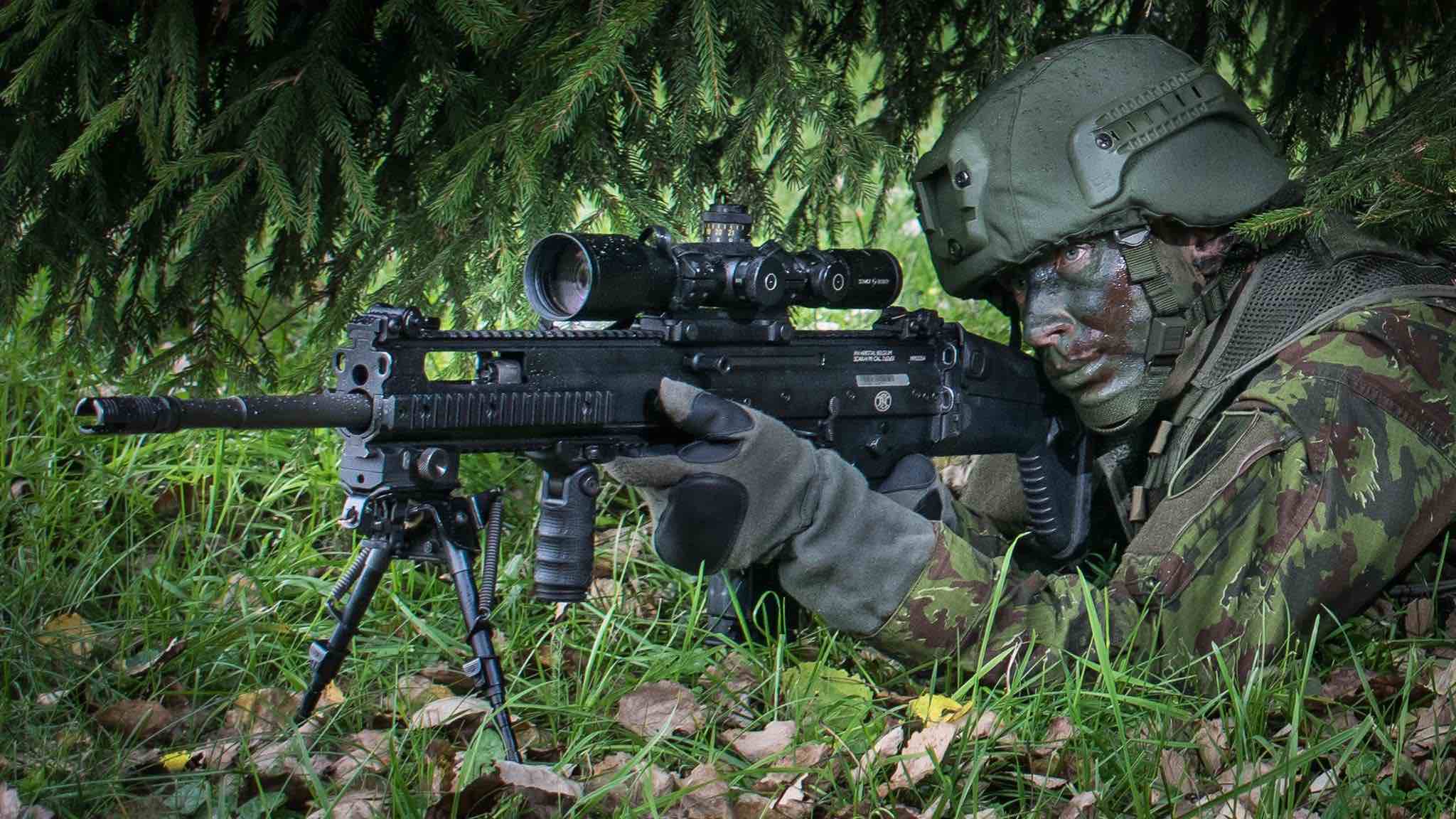


The Ministry of Defence in Vilnius confirmed this week that the project would involve a three-tiered system of fortifications, designed to slow or halt any attempted incursion. In a statement released on its official X account, the department declared: “Lithuania is shifting from individual counter-mobility measures to a unified three-echelon defence line — giving greater depth, stronger control and full NATO/EU integration at our frontier.”
An illustration published by the ministry revealed the scale of the undertaking. The defensive line, stretching 50 kilometres in length, will be built along particularly vulnerable sections of the border. The first tier, set five kilometres behind border control points, will include anti-tank ditches, obstacles, minefields, fortified positions and trench networks.
The second echelon, spanning 15 kilometres, will incorporate drainage ditches, demolition-prepared bridges and blocked bridgeheads, supported by parks for engineer equipment. The final layer mirrors the second but adds roadside trees prepped for felling, a tactic aimed at slowing enemy movement through Lithuania’s dense forests.
Though the design resembles Cold War-style fortifications, officials stressed that it reflects modern hybrid threats as well as traditional armoured warfare. By integrating minefields, prepared demolition points and natural obstacles, Vilnius intends to create what one senior officer described as a “delay belt,” buying NATO crucial hours to reinforce its eastern flank in the event of conflict.
Lithuania shares a 275-kilometre border with Russia’s heavily militarised Kaliningrad exclave, as well as an extensive 679-kilometre frontier with Belarus. Both borders have become flashpoints in recent years. Kaliningrad hosts advanced missile systems and a permanent Russian garrison, while Belarus has allowed Moscow to station troops and weapons on its soil since the start of the full-scale invasion of Ukraine.
The announcement comes only weeks after a drone of unknown origin was reported to have entered Lithuanian airspace from Belarus on July 28. Though it caused no damage, the incident heightened fears about surveillance and sabotage operations. In response, Vilnius announced a reinforcement of its air defences along the Belarusian border.
Defence analysts view the new fortifications as a sober acknowledgement of Lithuania’s vulnerability. The Baltic states, along with Poland, form NATO’s northeastern frontier — often referred to as the Alliance’s “front line.” The so-called Suwałki Gap, a narrow corridor linking Lithuania with Poland, is widely considered one of the most precarious choke points in Europe, separating Kaliningrad from Belarus. A concerted Russian move to close that gap would isolate the Baltic states from the rest of NATO.
By hardening its borders, Lithuania is sending a message to both Moscow and Minsk that it will not be caught unprepared. Officials in Vilnius stress that the system is designed to delay rather than repel a full-scale invasion, but in doing so it increases the credibility of NATO’s collective defence. “Every trench, every obstacle, every mined bridge buys time,” said one Lithuanian officer. “And time is the one resource NATO needs in the opening hours of a conflict.”
The timing is politically significant. Relations between Lithuania and Belarus are at their lowest point in decades. The European Union has imposed sweeping sanctions on Minsk for its role in facilitating Russia’s war effort, including providing territory for troop deployments and missile strikes against Ukraine. Vilnius has taken a particularly hard line, closing border crossings and tightening controls on Belarusian goods and citizens.
Domestically, the announcement is likely to be popular. Lithuanians are acutely aware of their country’s geographical exposure and the risks of Russian adventurism. Memories of Soviet occupation remain vivid, and public opinion has consistently favoured robust defence measures. Parliament has already approved record defence spending, surpassing NATO’s 2 per cent GDP benchmark and heading toward 3 per cent.
Yet the initiative will not be without controversy. Environmental groups have expressed concern that large-scale ditching and tree-felling could damage ecosystems along Lithuania’s pristine woodland frontiers. Critics also point to the financial burden, with billions of euros required to maintain and expand the defences. Still, officials insist the price of preparedness is far less than the cost of unpreparedness.
NATO allies are expected to welcome the move. The fortifications will integrate with the Alliance’s wider plans for a strengthened eastern posture, including permanent troop deployments in the Baltics and rapid reinforcement strategies. In effect, Lithuania’s new line of defence is being designed not only for itself, but as a forward bulwark for the entire Alliance.
For Vilnius, the message is simple. With Russia’s war in Ukraine grinding on and Belarus deepening its alignment with Moscow, complacency is not an option. The new defence line may not guarantee security, but it ensures that any adversary seeking to test Lithuania’s borders will find them far more formidable than before.
You must be logged in to post a comment.
Germany’s Fighter Jet Spree Is a Wake-Up Call for Europe’s Complacent Defence